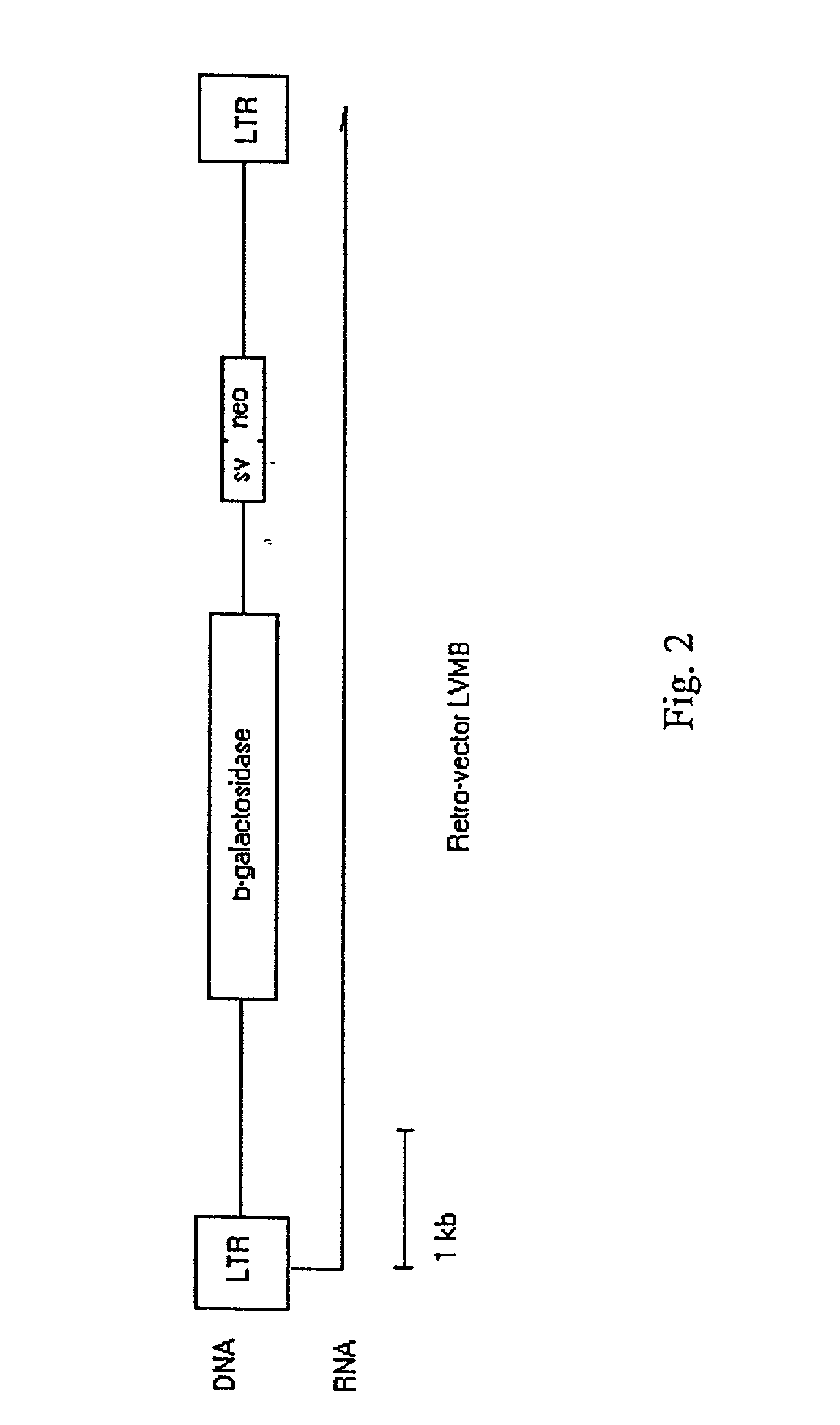RNA transfection of sperm cells
a technology of sperm cells and transfection, applied in the field of transgenic multicellular organism production and use, can solve problems such as some technical difficulties
- Summary
- Abstract
- Description
- Claims
- Application Information
AI Technical Summary
Problems solved by technology
Method used
Image
Examples
embodiment 1
[0049] Preferred In vitro fertilization (IVF) generation of F.sub.0 founder mice expressing new genetic information using spermatozoa pre-incubated with RNA.
embodiment 2
[0050] Mouse epididymal sperm cells were surgically obtained from male donor(s) (Hogan, 1994) and incubated with RNA transcribed from retroviral vector pVLMB DNA (Hodgson et al., PCT / US98 / 24667) bearing the Lac-z (beta-galactosidase) reporter gene. Routinely, 50 ng of RNA per 10.sup.6 spermatozoa were mixed in fertilization medium (FM, Whittingham, 1971) for 30 min in 5% carbon dioxide in air. 2.times.10.sup.6 sperm cells were then withdrawn from the incubation mixture and used to fertilize oocytes according to published procedure (Hogan, 1994); embryos were grown in vitro to the two-cell stage and then implanted into foster mothers. Approximately 30 days after birth, randomly selected offspring were sacrificed, DNA samples were extracted from different organs, and were analyzed by direct PCR using appropriate oligonucleotide primer combinations designed to amplify portions of the Lac-z gene (FIGS. 3 & 4). The results demonstrated that: a) cDNA molecules complementary to the sperm-c...
embodiment 3
[0052] Preferred Foreign genetic Information is Transferred From Targeted tissues of positive mice to 3T3 cell cultures.
[0053] F.sub.0 and F.sub.1 mice were sacrificed, organs were collected, and DNA samples were extracted from a small fragment of each organ and used for PCR screening. PCR positive tissues were homogenized in a Potter homogenizer, spun down to sediment cellular debris and the supernatants were collected and filtered through a 0.22 .mu.m filter. Aliquots of the supernatants were then incubated with Lipofectamine.TM. reagent (Invitrogen Corporation, Bethesda, Md.) as described by Hodgson and Solaiman, 1996, Supra, and were then added to mouse NIH 3T3 cell cultures and incubated overnight. The following day the supernatant-containing medium was removed and substituted with fresh medium and cells were allowed to grow for one more day. 0.8 mg / ml of G418 were added to plates and cells were incubated for further 5 to 7 days. Control plates, containing cells that had not b...
PUM
| Property | Measurement | Unit |
|---|---|---|
| volume | aaaaa | aaaaa |
| pH | aaaaa | aaaaa |
| time | aaaaa | aaaaa |
Abstract
Description
Claims
Application Information
 Login to View More
Login to View More - R&D
- Intellectual Property
- Life Sciences
- Materials
- Tech Scout
- Unparalleled Data Quality
- Higher Quality Content
- 60% Fewer Hallucinations
Browse by: Latest US Patents, China's latest patents, Technical Efficacy Thesaurus, Application Domain, Technology Topic, Popular Technical Reports.
© 2025 PatSnap. All rights reserved.Legal|Privacy policy|Modern Slavery Act Transparency Statement|Sitemap|About US| Contact US: help@patsnap.com



